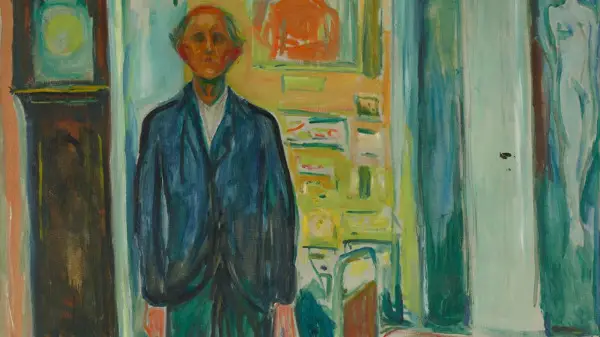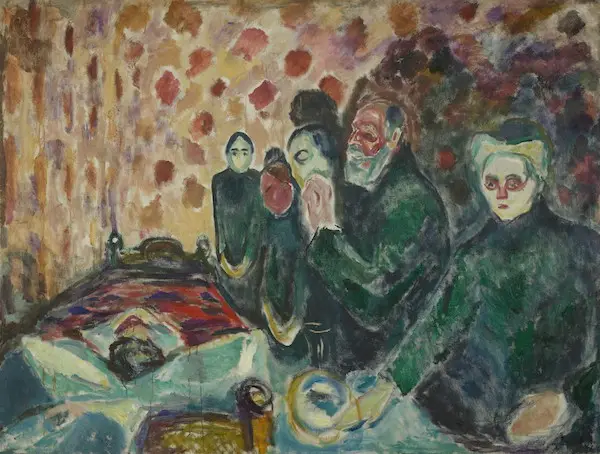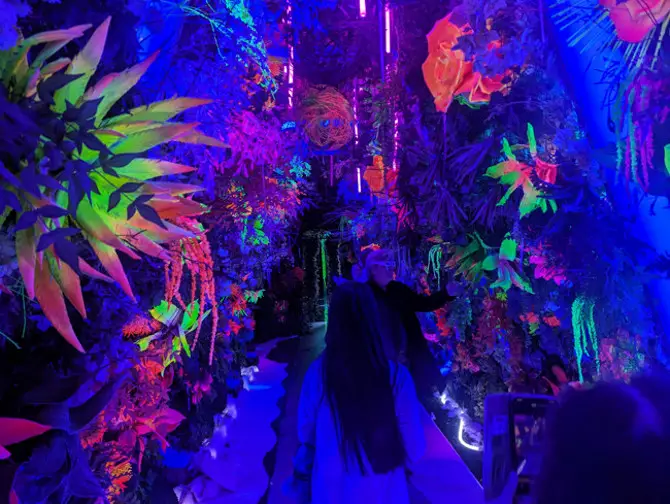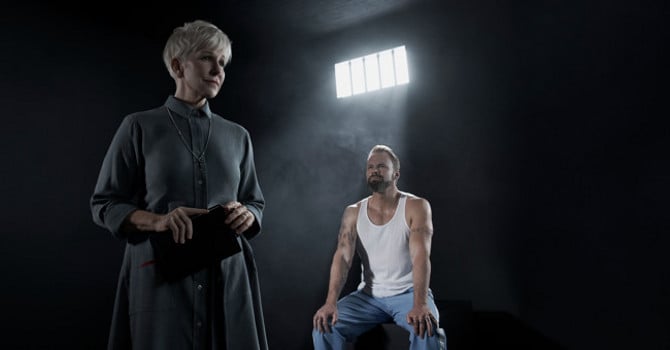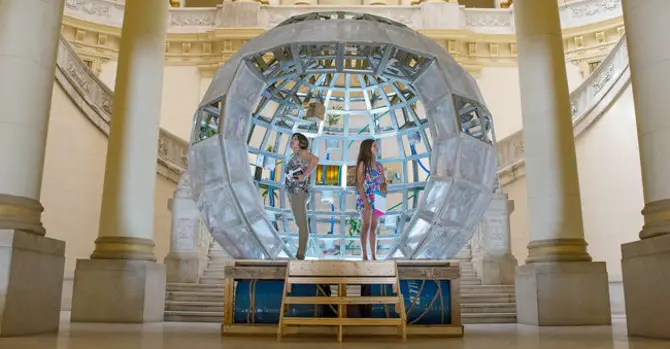
Say the name “Edvard Munch,” and many people will immediately think of "The Scream," the painting of the skull-like face contorted in agony at a bridge; it’s become shorthand for universal anxiety and despair. (That work is not included in the Met Breuer current exhibition Edvard Munch: Between the Clock and the Bed, though four versions of it were made, and the exhibit demonstrates that this theme isn’t confined to just that painting. Worth seeking out: "Sick Mood at Sunset, Despair," (1892) an early incarnation of "The Scream"; it’s being shown outside of Europe for only the second time.)
Munch's Between the Clock and the Bed, 1943.
The sprawling exhibit, categorized by theme rather than chronologically, includes 43 of Munch’s works, created over 60 years. Seven works are being shown in this country for the first time; look for "Puberty," "Jealousy," and "Death Struggle." The categories in the exhibition include “Munch in the First Person,” (the self portraits); “In the Studio,” and ”The Sick Room.” This is the first exhibition on the artist in this country in 10 years, and it looks at Munch’s career with an eye to how he revisited and revised certain themes over a period of years. The way the paintings are displayed allows the viewer to glimpse how themes are echoed and reworked.
Munch's Death Struggle, 1915.
Between the Clock and the Bed, the painting that gives the exhibition its name, is the first self portrait in the show, and it’s a powerful opener: it shows the artist standing in his bedroom between a clock with no hands or face and a neatly made bed; symbols, perhaps, of death and time, with paintings hanging on the wall, perhaps representing his life’s work. The show contains 16 self-portraits—or “self scrutinies,” as Munch called them—which trace the course of his life, and are by turns revealing—and full of secrets.
Observing works grouped this way allows the viewer to see that anxiety and despair were frequent subjects in Munch’s work. (There may as well be a sign saying “Abandon hope, all ye who enter there,” with a flashing arrow, at the beginning of the exhibition.)
Munch was largely self-taught—he had little formal training—but his brushwork and composition are assured and unmistakable, and though largely known for the despair and anxiety in his paintings, he also produced theater design, sculpture and graphic art. He was known as well for being incredibly prolific--he produced approximately 1750 paintings and 4500 watercolors. And while he achieved fame early in his career for his portrayals of anxiety and hopelessness, he himself thought that his “breakthrough" didn't occur until he was 50.
Munch’s work was associated with both the Symbolist and Expressionist movements, and would strongly influence German expressionism. But what’s noteworthy, and somewhat unexpected, is his use of rich, deep colors in some of the works: "The Dance of Life," for instance, shows couples dancing, but a closer look reveals women in three stages of life. What also captures the viewer’s attention, however, is the deep red of one of the dresses; the dusky blue of the sky. And while anxiety and themes of illness are prevalent in the galleries, what’s moving is the range of ways in which they’re depicted.
It’s not an “easy” exhibition, but it’s deeply affecting one, and rest assured, you’ll never look at "The Scream" the same way ever again.
Edvard Munch: Between The Clock and the Bed runs at the Met Breuer through Feb. 4, 2018. For more information, visit
metmuseum.org.

